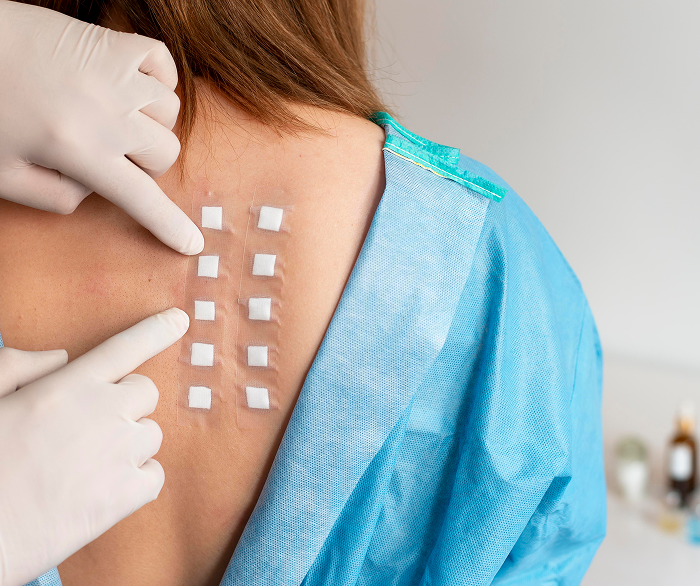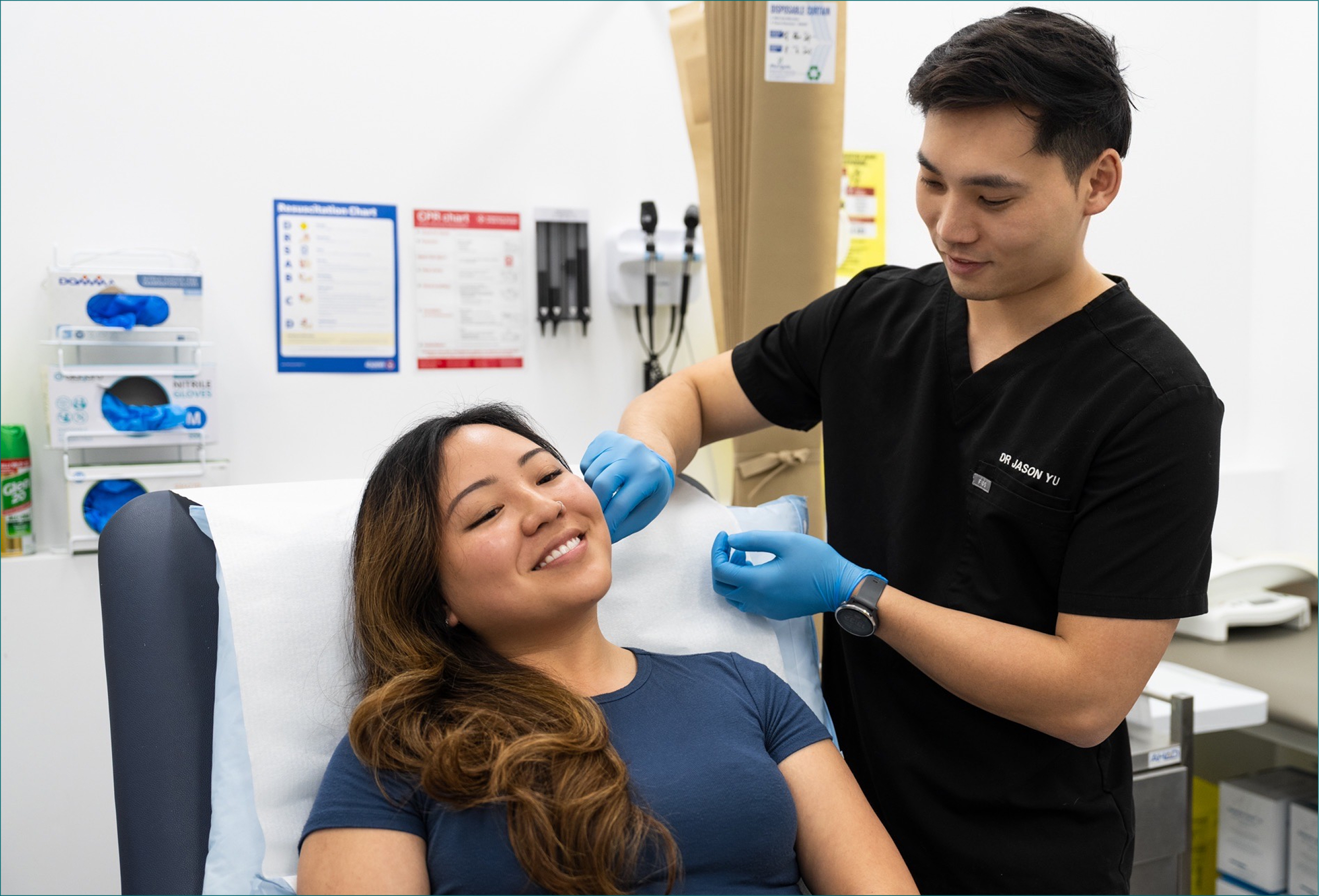
Patch Testing
Patch testing is a diagnostic method used to identify specific substances causing allergic contact dermatitis, a skin condition caused by an immune reaction to specific allergens.
Common allergens might exist in metals (like nickel), fragrances, preservatives, rubber, and hair dye. However, there are hundreds of potential causes for allergic contact dermatitis which makes it difficult to diagnose.
During the test, allergens are individually loaded onto patches, which are then placed on the skin with adhesive tape. After 48 hours, the patches are removed, and the skin is assessed for any reactions. A follow-up examination is conducted after another 48 hours.
- Day 1: Patches applied to your back
- Day 3: Patches removed; initial results read.
- Day 5: Final reading for reactions.
During this time, you should avoid showering or scratching the test area. In addition, try to avoid excessive sweating as that can impact the results.
Yes, patch testing can be performed on children, especially when allergic contact dermatitis is suspected. However, the range of allergens tested may be adjusted based on the child's age and medical history.
Patch testing is generally safe. However, you may experience:
- Itching or discomfort at test sites
- Redness, swelling, or small blisters as a positive reaction to the test
- Rarely, skin discolouration
These side effects usually resolve within a few days and are a normal part of identifying allergic triggers
You may benefit from patch testing if:
- You have recurrent rashes that commonly occur on the hands, feet, neck and face(eyelids).
- You are concerned about occupational exposure that may be causing your rashes.
- Your symptoms worsen after using skincare, hair dye, jewellery, cleaning products etc.
Once the allergen(s) causing your allergic contact dermatitis are identified:
- You'll receive a list of ingredients or substances to avoid
- Your doctor may recommend changes to personal care products or occupation-related
- A customised management plan will be created
This helps prevent future flare-ups and improves long-term skin health.






